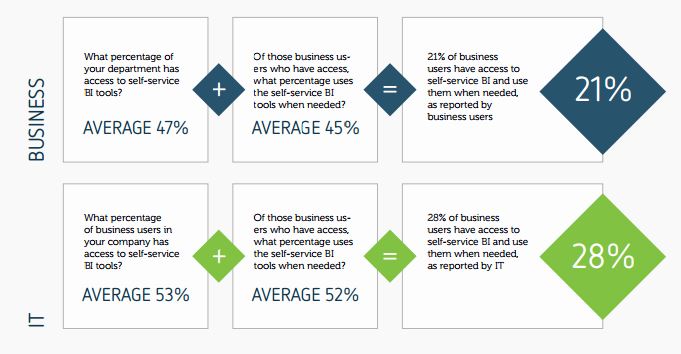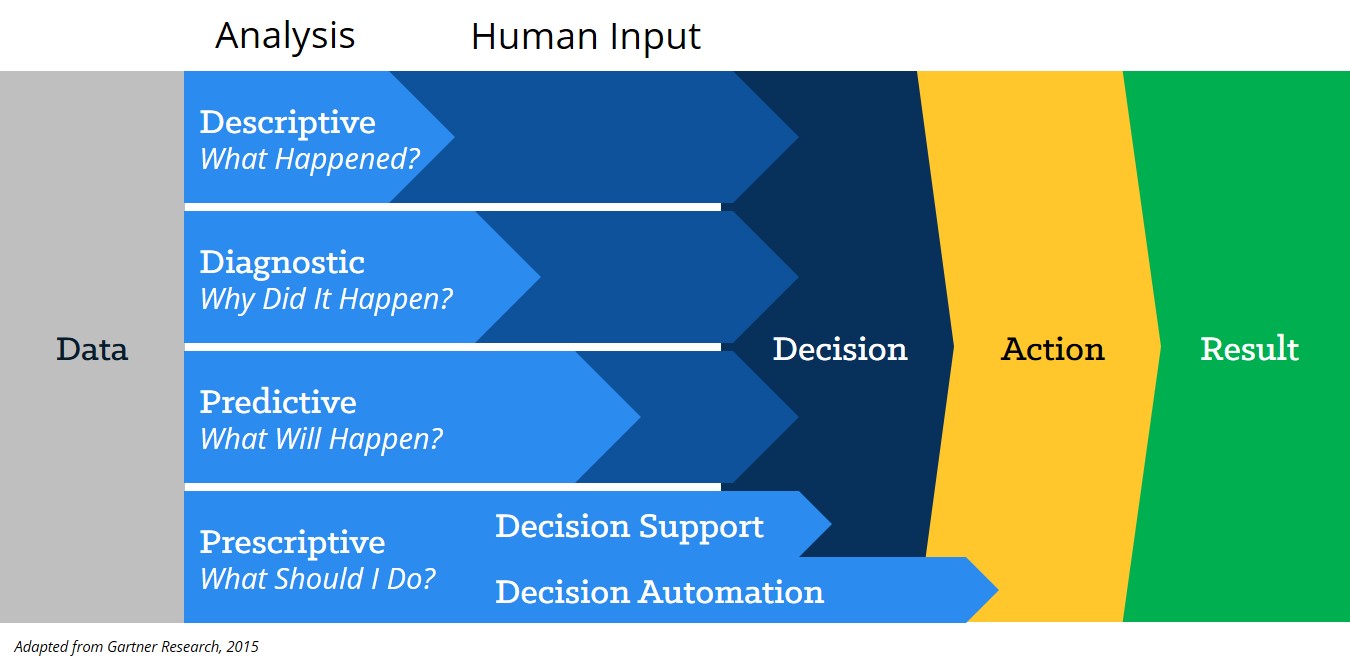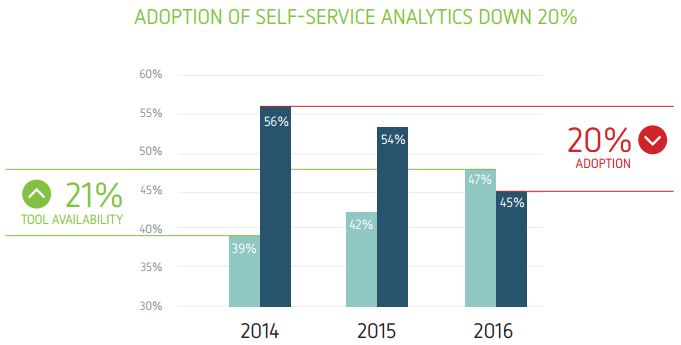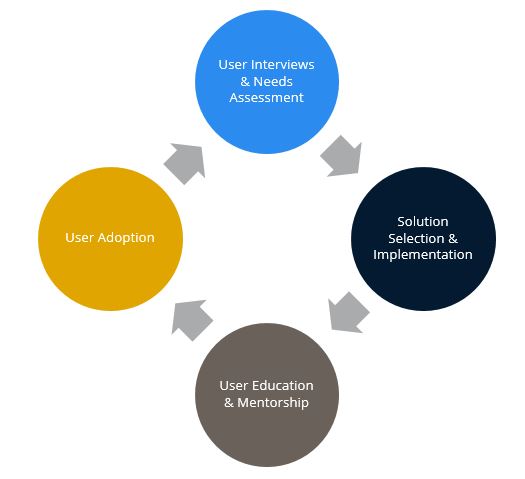Analytics End User Adoption: Rethinking Our Engagement Strategy
In the last few weeks, I’ve spoken with three different clients who are struggling with the issue of end user adoption. Each described a routine set of activities, either completed or in process, that you would expect to see in a thoughtful change management program. Nonetheless, all three customers expressed frustration at the lack of user adoption.
Why is this? Do we need to rethink our traditional process for engaging users as we embark on our data and analytics journey?
In a word, yes.

Source: 2017 State of Analytics Adoption Report – Logi Analytics
As the findings above show, something is clearly missing if only about half the people with access to self-service BI are actually using it in both business and IT.
There are a wide range of factors that influence end user adoption, including leadership support, training, incentives, education, early engagement with users and funding levels. Above and beyond those, however, are three criteria that have traditionally been seen as key predictors of successful user adoption:
- Is the new capability intuitive for the user?
- Is the new capability as efficient, or more efficient, than the old way of doing things?
- Can the end user clearly answer the question “What’s in it for me?”
In order to determine whether these are still the correct – and only — questions that need to be asked, it’s important to recognize how data and analytics programs have evolved. No longer are we simply implementing a new process, technology or tool. Rather, we are fundamentally trying to change how we think about and manage our business. Trying to move from intuition and experience toward facts and data-driven actions is a deeper, culture-based change that is much more difficult to implement and maintain.
Let’s look at our three criteria in this context:
Intuitive Capability
Data and analytics programs often deliver a tool or an interface to the data. While the tool itself may be intuitive to use, what is not always clear is how to use it. For example, are we trying to determine what happened? Why it happened? What is going to happen, and/or what we should do about what has already happened? Without these answers, the behavior we are trying to change is no longer linked with the capability we are trying to adopt.

Efficiency
The analytical tool that is deployed is always far more efficient than the previous spreadsheet models that so often predate our work. Unfortunately, the question of efficiency isn’t really applicable, or at least is less relevant in data and analytics end user adoption. By deploying the tool we are completely changing the role of the end user from report generator and reconciler to data analyst.
“What’s in It for Me?”
Often the answer is nothing, honestly. From the perspective of many end users, we’re giving them a tool that makes their current role of report generator and reconciler obsolete and asking them to start thinking. And when they’ve done that, they will need go find a senior leader and persuade them to take action, which given their experience and intuition will be a hard sell and a potentially career-limiting move. Not exactly a win-win.

Source: 2017 State of Analytics Adoption Report – Logi Analytics
Changing the Conversation around End User Adoption
Clearly, our approach to driving end user adoption needs to change. Many of the traditional elements of change management, communication, and training are still valid and should continue to be incorporated into your data and analytics roadmap. But there are several additional areas that also need to be addressed:
- Understanding who your end users ought to be (vs. who they are currently)
- Identifying and designing the right end user experience
- Working with single use cases — one at a time, if necessary
- Teaching users to ask questions
- Developing the executive dashboard and driving questions from senior leaders
So what does this look like in practice? Our advice to clients is this: develop your data and analytics roadmap with your stakeholders, start small, learn quickly, adapt, and iterate. This “fail fast” approach lets you ensure that you are heading in the right direction, making the best use of organizational resources, and building on successful use cases.

As Greg Bonnette, our VP of Strategy and Innovation, recently tweeted from Spark Summit East 2017, “Data is only as valuable as the decisions it enables.” If you go in with the expectation that implementing an analytical tool is only the beginning, that the real work still lies ahead, and that the process often requires the end user to change their entire role, you’ll be in a much better position to achieve successful user adoption.
About Ironside
Ironside was founded in 1999 as an enterprise data and analytics solution provider and system integrator. Our clients hire us to acquire, enrich and measure their data so they can make smarter, better decisions about their business. No matter your industry or specific business challenges, Ironside has the experience, perspective and agility to help transform your analytic environment.






